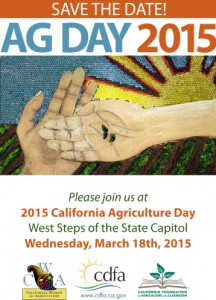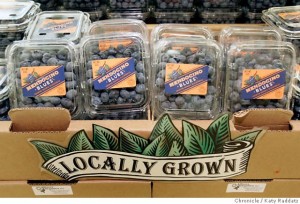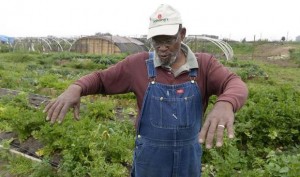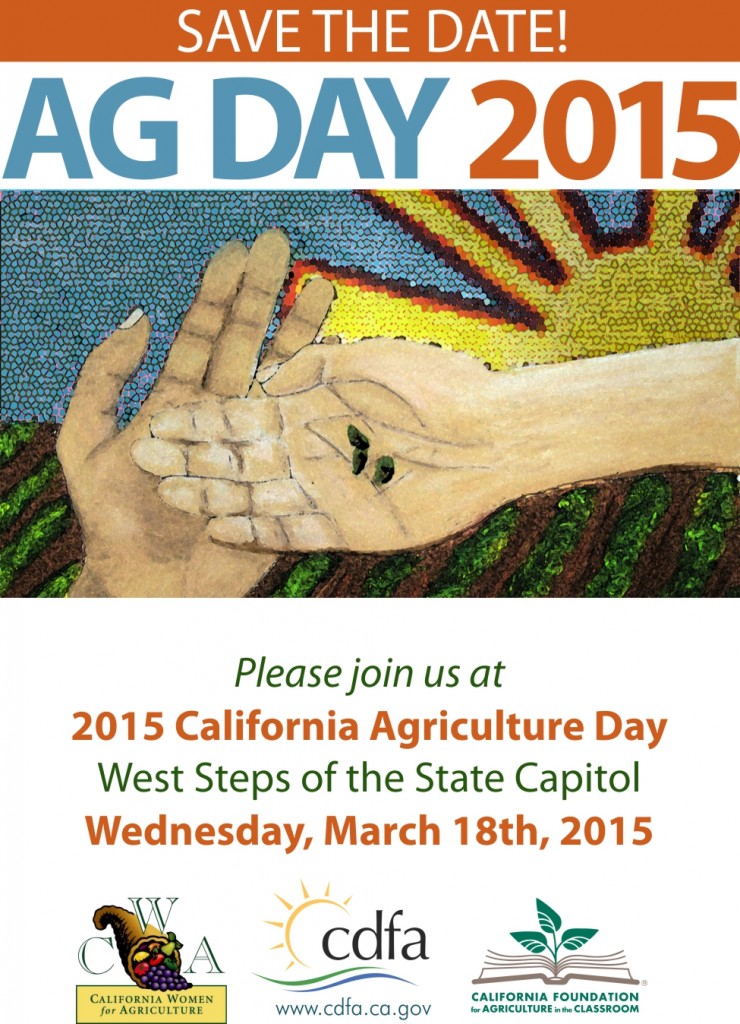Each year, more than one-million students learn about the importance of agriculture through the efforts of California Foundation for Agriculture in the Classroom. This spring, Agriculture in the Classroom will partner with CDFA and the California Women for Agriculture to host California Ag Day 2015 as part of National Ag Week (March 15-21).
On March 18, the State Capitol will come alive with farm animals, educational displays, and entertainment all celebrating California’s great agricultural bounty during California Agriculture Day. The theme for the 2015 event is “California Agriculture: Breaking new Ground.” A focus will be the importance of soil health to our food supply and all of agriculture.
Ag Day is the agricultural community’s annual opportunity to educate and inspire the farmers and ranchers of tomorrow, showcase new technologies, and highlight the diversity of California agriculture.
California Department of Food and Agriculture (CDFA) Secretary Karen Ross, along with 12 other industry leaders, are members of the National Agriculture Week host committee. The host committee helps plan and promote special events throughout the state.
“Please join me and other leaders in agriculture as we support the education of our next generation of consumers and voters,” said Secretary Ross. “National Agriculture Week gives us the opportunity to celebrate agriculture, an industry that provides a safe, abundant, and affordable food supply, a strong economy, and a world of job opportunities.”
An additional Ag Week event will be held on March 19 at the Sacramento Kings’ Experience Center in Sacramento, to recognize student winners of Ag in the Classroom’s Imagine this… Story Writing Contest. Student authors will attend and read their stories from the newly published Imagine this… books to the audience. A southern California event will be held aboard The Queen Mary on April 2.
Since 1986, The California Foundation for Agriculture in the Classroom, a non-profit organization, has worked to promote a greater awareness of agriculture’s role in our daily lives to California’s teachers and students. The Foundation delivers exciting, standards-based curriculum that builds students’ knowledge of the farmers and ranchers who produce the food, clothing, and shelter they use every day. Agriculture in the Classroom programs reach far beyond the classroom walls and into the lives of California’s students and their families.










